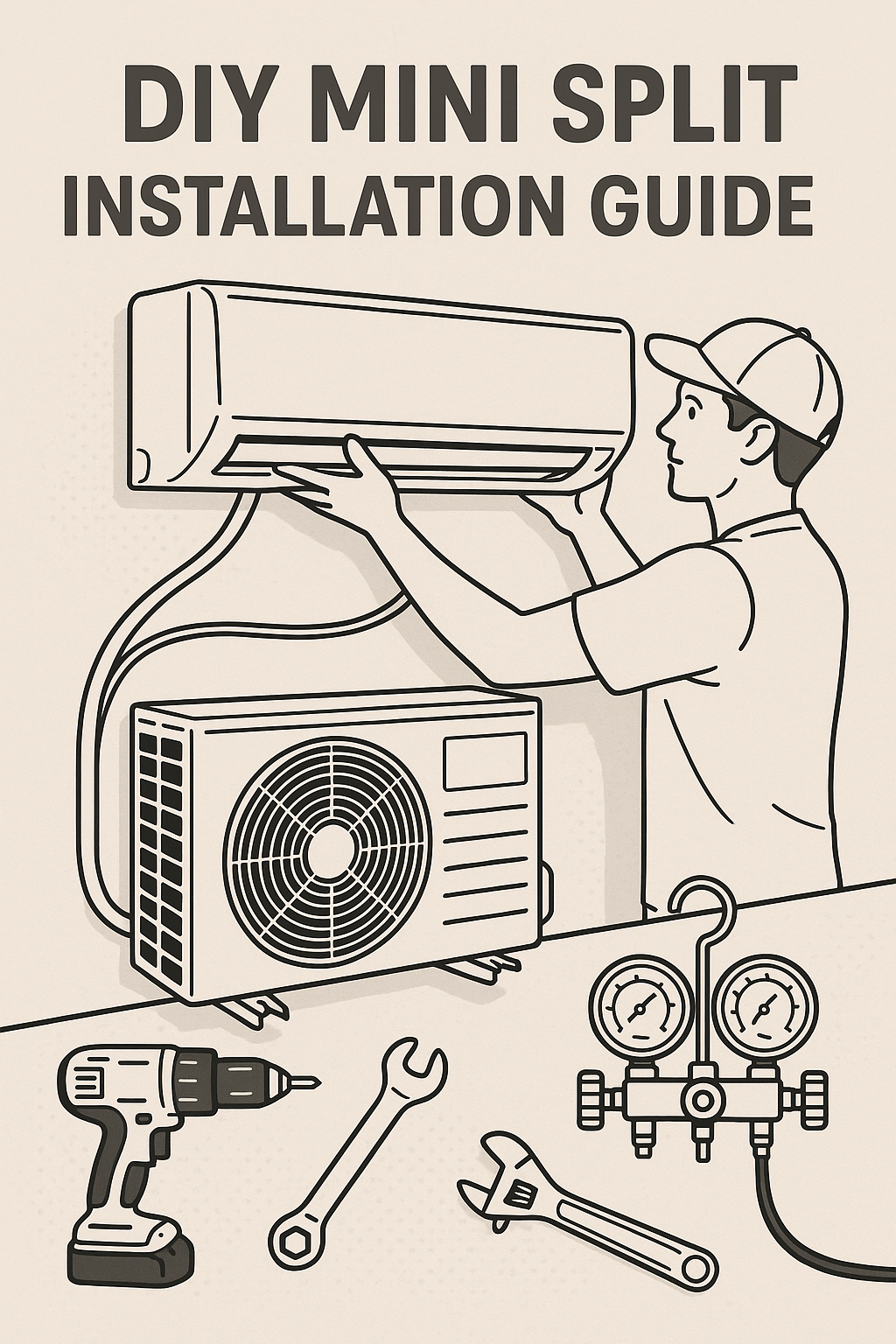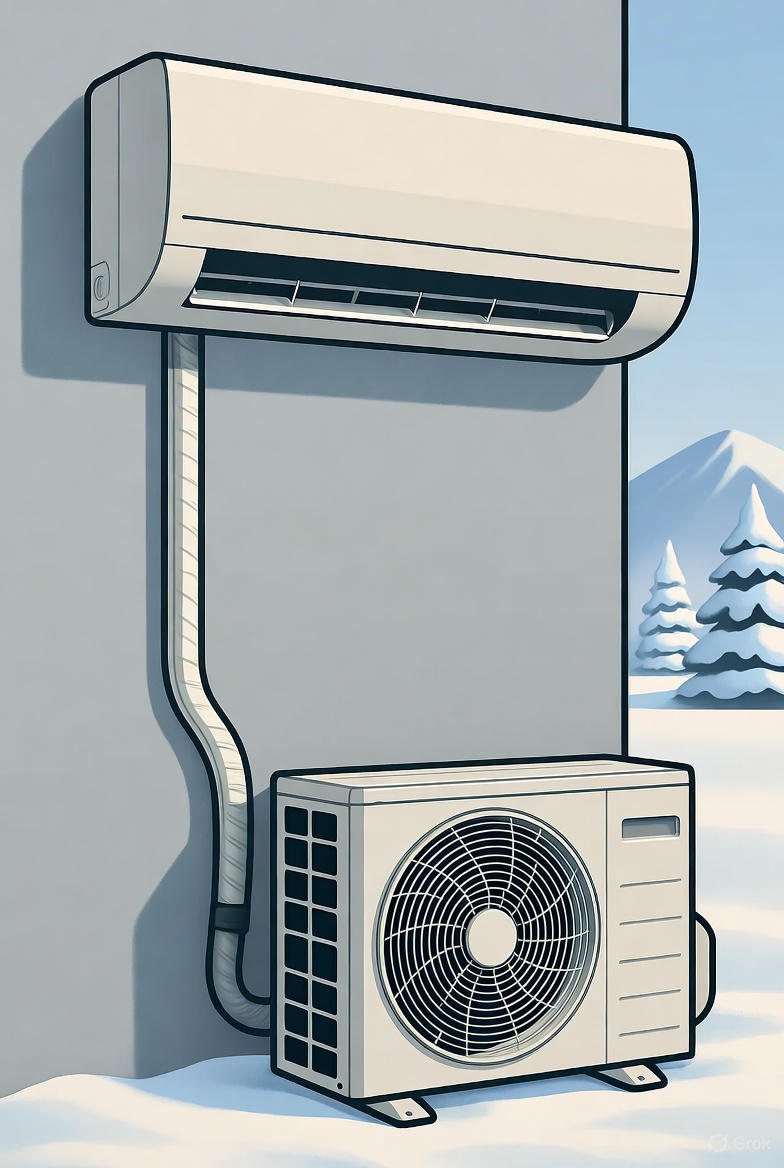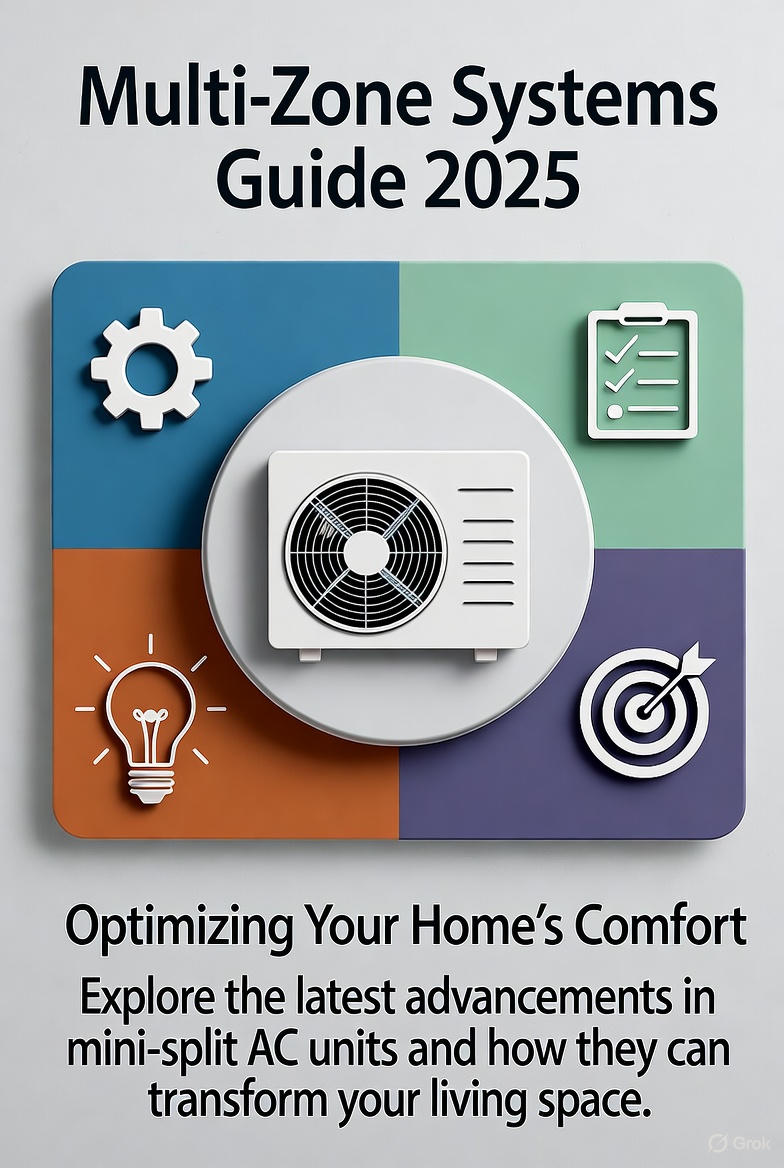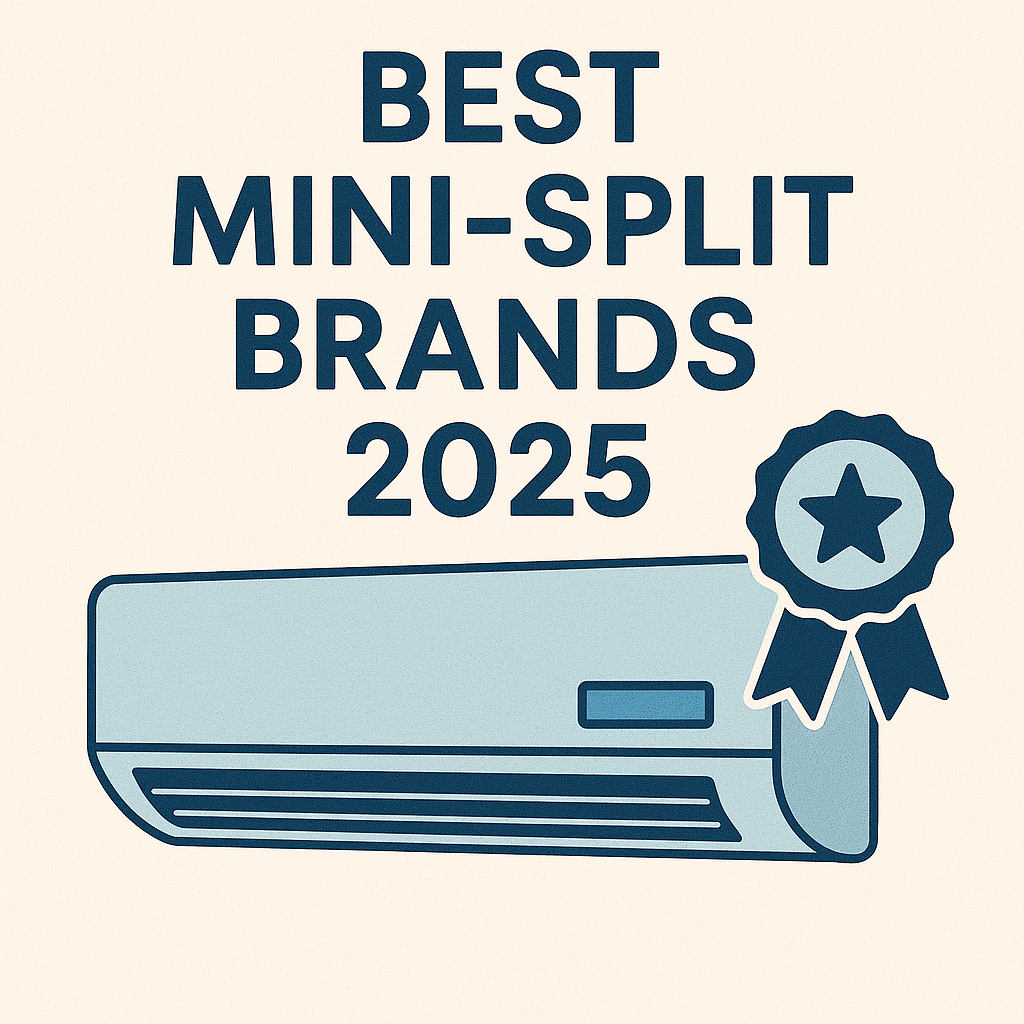When Brian Carter started researching mini-splits for his Tampa garage workshop last spring, the vacuum pump requirement nearly ended his DIY ambitions. YouTube tutorials showed complicated manifold gauges, 45-minute vacuum procedures, and warnings about moisture contamination destroying compressors. Then he discovered MRCOOL's DIY quick-connect system promising installation with "just a screwdriver"—no vacuum pump, no refrigeration knowledge, no $400 in specialized tools. At $1,750 for the 12K BTU system, it cost $550 more than comparable traditional mini-splits, but skipping the vacuum pump seemed worth the premium.
Brian installed his MRCOOL DIY in about 4 hours and had it cooling his workshop that afternoon. The system worked fine—until he calculated operating costs six months later. His garage's 350 square feet required approximately 210 hours of cooling during Tampa's brutal summer. With electricity at $0.13/kWh, his MRCOOL's SEER2 17 efficiency cost him roughly $195 for those six months. His neighbor installed a traditional Zone Air system with SEER2 24 in an identical workshop and spent approximately $140 for the same cooling—a $55 difference in just six months.
That's when Brian realized the math. Zone Air's traditional system cost $1,899 ($149 more than his $1,750 MRCOOL) but delivered 30% better efficiency. Add a $60 vacuum pump rental from Home Depot, and Brian's "cheaper" quick-connect decision cost him $440 more upfront while delivering ongoing higher operating costs. Over a 15-year system life, his convenience premium would total approximately $2,000+ in combined higher purchase price and energy waste.
This guide examines quick-connect mini-splits honestly: where they make sense (rare), where they don't (common), and why traditional systems like Zone Air deliver dramatically better value even for first-time DIYers. If you're genuinely intimidated by vacuum pumps, we'll rank the best quick-connect options. But we'll also show you why renting a vacuum pump for $60 and choosing a traditional system saves you thousands of dollars over the system's lifetime.
How Quick-Connect Mini-Splits Work
Traditional Mini-Split Installation
Requires:
- Vacuum pump ($300-800 to buy, $40-80 to rent)
- Manifold gauge set ($100-200)
- Torque wrench ($40-100)
- Flaring tool (sometimes) ($50-150)
- Technical knowledge of refrigeration
Process:
- Install indoor and outdoor units
- Connect refrigerant line sets
- Vacuum system to remove air/moisture (45-60 minutes)
- Open service valves to release refrigerant
- Test system
Time: 4-8 hours for first-timers
Quick-Connect Installation
Requires:
- Basic hand tools only
- No refrigerant knowledge needed
- No specialized HVAC equipment
Process:
- Install indoor and outdoor units
- Connect quick-connect line sets (snap together)
- Open service valves
- Test system
Time: 2-4 hours for first-timers
The Trade-Off
What You Gain:
- No vacuum pump rental/purchase ($40-800 savings)
- Faster installation (2-4 hours vs 4-8 hours)
- No technical refrigeration knowledge needed
- Lower intimidation factor
What You Lose:
- 15-30% lower efficiency (SEER2 17-19 vs 22-26)
- 20-40% higher price per BTU vs traditional systems
- Proprietary line sets (can't use standard)
- Limited brand selection
- Generally lower build quality
- Often noisier operation
Bottom Line: You're paying $200-500 extra and accepting lower efficiency to avoid $40-80 vacuum pump rental.
Top 5 Non-Vacuum Pump Mini-Splits 2025
#1 - MRCOOL DIY (Best Quick-Connect Available)
Overall Score: 7.5/10
Why It's #1: MRCOOL pioneered the quick-connect market and remains the leader. Best quick-connect performance available, extensive DIY support, and proven track record.
Specifications:
- SEER2: 17-19 (SEER 17.5-20)
- HSPF2: 8.5-9.5
- Operating range: 5°F to 75°F heating
- Noise: 35-55 dB indoor
- Warranty: 5 years parts
- Price: $1,400-2,000 (12K BTU)
Strengths:
- ✓ Most established quick-connect brand
- ✓ Best performance in quick-connect category
- ✓ Extensive video tutorials and support
- ✓ WiFi and smart home integration
- ✓ Multiple sizes (9K-36K BTU)
- ✓ Good brand recognition
Weaknesses:
- ⚠ 30% higher price than comparable traditional systems
- ⚠ Low efficiency (SEER2 17-19)
- ⚠ No cold climate capability
- ⚠ Noisiest in rankings
- ⚠ Proprietary line sets (expensive replacements)
Best For:
- Absolute beginners unwilling to rent vacuum pump
- Those without any HVAC tools
- Simple, short line run installations
- Warm climates only
The Reality Check:
- MRCOOL 12K: $1,600
- Zone 12K traditional: $1,799 (+$199, +30% efficiency)
- Vacuum pump rental: $60
- Net cost difference: $139 for 30% better efficiency
Our Recommendation: Unless you're absolutely intimidated by vacuum pumps, spend the extra $139 for Zone's traditional system. The efficiency gain pays back in 2-3 years.
Price per Performance: 6/10
#2 - Perfect Aire QuickConnect (Best Value Quick-Connect)
Overall Score: 7.2/10
Why It's #2: Perfect Aire offers quick-connect technology at lower pricing than MRCOOL with similar performance. Best value in the quick-connect category.
Specifications:
- SEER2: 17-18 (SEER 17-18.5)
- HSPF2: 8.5-9
- Operating range: 0°F to 75°F heating
- Noise: 32-54 dB indoor
- Warranty: 5 years parts, 7 years compressor
- Price: $1,200-1,600 (12K BTU)
Strengths:
- ✓ Lower price than MRCOOL
- ✓ Quick-connect convenience
- ✓ Decent warranty (7 year compressor)
- ✓ Multiple capacity options
- ✓ Slightly better cold climate capability
Weaknesses:
- ⚠ Less established brand
- ⚠ Limited DIY support/tutorials
- ⚠ Low efficiency
- ⚠ Basic features only
- ⚠ Limited dealer network
Best For:
- Budget quick-connect buyers
- Simple DIY installations
- Moderate climates
- Supplemental cooling/heating
Verdict: If you're set on quick-connect, Perfect Aire offers better value than MRCOOL at $200-400 less with similar performance.
Price per Performance: 7/10
#3 - Pioneer QuickConnect Series (Budget Quick-Connect)
Overall Score: 6.9/10
Why It's #3: Pioneer adapted their budget mini-split line with quick-connect fittings. Lowest price in quick-connect category, but performance matches the pricing.
Specifications:
- SEER2: 16-17 (SEER 16.5-18)
- HSPF2: 8-9
- Operating range: 5°F to 75°F heating
- Noise: 34-56 dB indoor
- Warranty: 5 years parts
- Price: $1,100-1,500 (12K BTU)
Strengths:
- ✓ Lowest quick-connect price
- ✓ Established Pioneer brand
- ✓ Wide availability
- ✓ Simple installation
- ✓ Multiple size options
Weaknesses:
- ⚠ Lowest efficiency (SEER2 16-17)
- ⚠ Limited cold climate performance
- ⚠ Loud operation
- ⚠ Basic features
- ⚠ Lower build quality
Best For:
- Absolute minimum budget
- Warm climates
- Non-critical applications
- Garage/workshop
Verdict: At this efficiency level, the convenience isn't worth the sacrifice. Consider traditional budget brands instead.
Price per Performance: 6.5/10
#4 - Della QuickConnect (Decent Budget Option)
Overall Score: 6.7/10
Why It's #4: Della entered the quick-connect market recently with competitive pricing. Acceptable performance for budget-conscious DIYers.
Specifications:
- SEER2: 16-18 (SEER 17-19)
- HSPF2: 8-9
- Operating range: 5°F to 75°F heating
- Noise: 33-55 dB indoor
- Warranty: 5 years parts
- Price: $1,100-1,550 (12K BTU)
Strengths:
- ✓ Competitive quick-connect pricing
- ✓ Decent efficiency for category
- ✓ Quick installation
- ✓ Multiple sizes available
- ✓ WiFi capable (some models)
Weaknesses:
- ⚠ Lesser-known brand
- ⚠ Limited support documentation
- ⚠ No cold climate capability
- ⚠ Basic warranty
- ⚠ Mixed quality reports
Best For:
- Budget DIY installations
- Supplemental cooling
- Warm climates
- First quick-connect experience
Verdict: Acceptable budget option if set on quick-connect, but traditional Senville offers better performance at similar price.
Price per Performance: 6.5/10
#5 - AirCon QuickFit (New Market Entrant)
Overall Score: 6.5/10
Why It's #5: AirCon's new quick-connect line targets the DIY market with competitive features. Least established brand but decent specifications.
Specifications:
- SEER2: 16-17 (SEER 17-18)
- HSPF2: 8-8.5
- Operating range: 10°F to 75°F heating
- Noise: 35-57 dB indoor
- Warranty: 3 years parts
- Price: $1,050-1,450 (12K BTU)
Strengths:
- ✓ Lowest price point
- ✓ Quick-connect simplicity
- ✓ Basic WiFi features
- ✓ Decent cooling performance
Weaknesses:
- ⚠ Untested brand reliability
- ⚠ Shortest warranty (3 years)
- ⚠ Lowest efficiency
- ⚠ Limited support
- ⚠ Few sizes available
- ⚠ Very limited cold climate capability
Best For:
- Experimental installations
- Temporary solutions
- Extremely tight budgets
- Those willing to take a chance
Verdict: Too new and unproven. Wait for market track record or choose established brands.
Price per Performance: 6/10
Quick-Connect vs Traditional: The Real Math
Scenario 1: Basic 12K BTU Installation
MRCOOL DIY Quick-Connect:
- Equipment: $1,600
- Installation tools: $50 (basic hand tools)
- Installation time: 3 hours
- Total: $1,650
- SEER2: 17
- Annual cooling cost: $285
Zone Traditional (with vacuum pump rental):
- Equipment: $1,799
- Vacuum pump rental: $60
- Manifold gauges: $40 (buy cheap set)
- Installation time: 5 hours
- Total: $1,899
- SEER2: 24
- Annual cooling cost: $215
Comparison:
- Upfront savings (quick-connect): $249
- Annual energy savings (traditional): $70
- Break-even: 3.5 years
- Lifetime savings (traditional): $1,050 over 15 years
Scenario 2: Two-Zone Installation
2× MRCOOL DIY:
- Equipment: $3,200
- Installation: $100
- Total: $3,300
- Annual energy cost: $570
2× Zone Traditional:
- Equipment: $3,598
- Vacuum pump rental: $60 (use for both)
- Manifold gauges: $40
- Total: $3,698
- Annual energy cost: $430
Comparison:
- Upfront savings (quick-connect): $398
- Annual energy savings (traditional): $140
- Break-even: 2.8 years
- Lifetime savings (traditional): $2,100 over 15 years
Conclusion: The more zones you install, the better traditional systems look financially.
When Quick-Connect Makes Sense
✓ Valid Reasons to Choose Quick-Connect
1. Truly One-Time Installation If you'll only ever install one system and never use the tools again, convenience has value.
2. Extreme Tool Phobia Some people are genuinely intimidated by specialized equipment. Peace of mind has value.
3. Remote Location If you're installing in a location where tool rental isn't available (remote cabin, island, etc.), quick-connect eliminates shipping costs.
4. Time-Critical Installation Need cooling immediately and can't wait for tool rental/purchase.
5. Learning Installation Want to learn process on cheap system before upgrading to traditional.
✗ Bad Reasons to Choose Quick-Connect
1. "Vacuum pumps are too expensive" Rental: $40-80 for 24 hours. This saves $200-500 on equipment that wastes $70/year in energy.
2. "Too complicated" Vacuum pump operation is simpler than it sounds. YouTube has hundreds of tutorials.
3. "Saves time" Quick-connect saves 1-2 hours vs traditional. Is that worth $500 + ongoing efficiency loss?
4. "Best option for DIY" Actually, traditional systems with pre-charged line sets are nearly as DIY-friendly with proper tools.
The Better DIY Alternative: Traditional with Rented Tools
Zone's Traditional Recommendation
Instead of quick-connect, we recommend:
Equipment:
- Zone 12K BTU system: $1,799
- Pre-charged line sets included
- 10-year warranty
- SEER2: 24 (41% more efficient than MRCOOL)
Tools (One-Time):
- Vacuum pump rental (24 hrs): $60
- Cheap manifold gauge set: $40
- Torque wrench (rent or buy): $15-40
Total First Install: $1,914-1,939
Benefits Over MRCOOL:
- $1,050 lifetime energy savings
- 30% better cooling performance
- True cold climate capability
- 2x longer warranty (10 vs 5 years)
- Professional-grade build quality
- Quieter operation
The Process:
- Watch Zone DIY Series 20-minute installation video
- Install per video instructions
- Rent vacuum pump from local tool rental
- Follow vacuum procedure (pump runs unattended for 45 min)
- Open valves and test
Total Time: 5-6 hours vs 3 hours for quick-connect
Is 2-3 extra hours worth $1,050 in lifetime savings? Yes.
Installation Difficulty Reality Check
Quick-Connect Installation Difficulty: 4/10
Challenges:
- Mounting indoor/outdoor units
- Running line sets through walls
- Electrical connections
- Ensuring proper drainage
- Achieving proper torque on quick-connects
Traditional Installation Difficulty: 6/10
Additional Challenges:
- Operating vacuum pump (actually very simple)
- Monitoring vacuum gauge
- Opening service valves
The Truth: If you can handle quick-connect installation, you can handle traditional installation. The vacuum pump operation adds 45 minutes and minimal complexity.
Quick-Connect Efficiency Comparison
| Brand | SEER2 | vs Zone Traditional | Annual Cost Difference | |-------|-------|---------------------|------------------------| | MRCOOL DIY | 17-19 | -29% efficiency | +$70/year | | Perfect Aire | 17-18 | -29% efficiency | +$70/year | | Pioneer QC | 16-17 | -35% efficiency | +$85/year | | Della QC | 16-18 | -29% efficiency | +$70/year | | AirCon | 16-17 | -35% efficiency | +$85/year | | Zone Traditional | 24 | Baseline | $215/year |
Over 15-year lifespan: Quick-connect systems waste $1,050-1,275 in electricity.
Customer Experiences
MRCOOL DIY Owner (2 years):
"Installation was easy—no vacuum pump stress. But it's loud and my electric bill is higher than my neighbor's with a Mitsubishi. Would I buy again? Probably go traditional to save on electricity."
Zone Traditional Owner (DIY install, 3 years):
"Rented vacuum pump for $60. Watched YouTube videos. Installation took me 6 hours. Running quietly and efficiently. Electric bill is low. Wish I had done this for my other zones instead of paying for professional installs."
Perfect Aire Owner (1 year):
"Quick-connect was easy. Unit works fine but noisy. Wish I had researched efficiency before buying—bills are higher than expected."
Our Final Recommendation
For 95% of DIYers: Skip Quick-Connect
Here's why:
-
Vacuum pump rental costs $40-80
- One-time expense
- Tool rental stores everywhere
- Simple operation (YouTube tutorials)
-
Efficiency losses cost $70-85/year
- Year 1: Already lost vacuum pump savings
- Years 2-15: Pure waste
- Lifetime cost: $1,050-1,275 extra
-
Upfront savings are minimal
- Quick-connect: $1,100-1,600
- Zone traditional: $1,799
- Difference: $199-699
- Break-even: 2.8-9.9 years (most in 3-4 years)
-
Performance suffers
- 30% lower efficiency
- Noisier operation
- Limited cold climate capability
- Lower build quality
- Shorter warranties
The Only Real Advantage: 2-3 hours faster installation
Is saving 2-3 hours worth $1,000+ over the system's lifetime? For most people, no.
What To Buy Instead
Best DIY-Friendly Traditional System: Zone DIY Series
- Pre-charged line sets (90% as easy as quick-connect)
- Vacuum pump rental: $60 (use for 45 minutes)
- SEER2 24 (41% more efficient than MRCOOL)
- 10-year warranty (2x longer)
- True cold climate capability
- U.S.-based support
- Professional-grade quality
- Price: $1,799-2,399
Total Cost: $1,859-2,459 (with vacuum pump rental) Lifetime Savings vs Quick-Connect: $800-1,100
When Quick-Connect Actually Makes Sense
Choose MRCOOL DIY if:
- Remote location (no tool rental available)
- Genuinely can't operate vacuum pump (physical limitations)
- Short-term/temporary installation (< 3 years)
- Learning installation before real project
For everyone else: Rent the vacuum pump and buy a better system.
Frequently Asked Questions
Are quick-connect mini-splits really easier to install than traditional systems?
Quick-connect systems eliminate the vacuum pump step, which marketing suggests represents a huge barrier for DIYers. In reality, the difficulty difference is minimal. Both installation types require mounting indoor and outdoor units, running line sets through walls, making electrical connections, and ensuring proper drainage—tasks that consume 90% of installation time and represent the actual challenges. The vacuum pump operation adds about 45 minutes but requires minimal skill—you connect the pump, turn it on, wait while it runs unattended, verify the gauge holds vacuum, then disconnect. If you possess the skills to mount units and run refrigerant lines (required for quick-connect too), you can absolutely handle vacuum pump operation. Tool rental stores provide pumps for $40-80, and countless YouTube videos demonstrate the straightforward procedure. Quick-connect installations rate about 4/10 difficulty while traditional installations rate 6/10—barely harder for dramatically better equipment.
Is MRCOOL DIY worth the premium price?
MRCOOL DIY systems cost $1,400-2,000 for 12K BTU capacity—roughly $200-600 more than traditional budget systems and $0-400 less than traditional mid-tier systems like Zone Air. You're paying extra for quick-connect convenience while accepting SEER2 17-19 efficiency versus SEER2 24 for Zone Air—a 26-35% efficiency penalty. That efficiency gap costs approximately $70 annually for typical usage, recovering any upfront savings within 3-4 years and costing an additional $1,050+ over a 15-year lifespan. You're also accepting noisier operation (35-55 dB vs 26-42 dB), limited cold climate capability (5°F minimum vs -13°F), shorter warranty (5 years vs 10 years), and lower build quality. MRCOOL pioneered quick-connect and builds the best systems in that category, but "best quick-connect" doesn't mean "worth buying" when traditional systems deliver superior value even after vacuum pump rental costs.
Do I really need a vacuum pump for mini-split installation?
Yes, traditional mini-splits absolutely require vacuum pump operation to remove air and moisture from refrigerant lines before releasing the pre-charged refrigerant. Air and moisture contaminate refrigerant, reduce efficiency, cause corrosion, and shorten compressor life. Proper vacuum removes these contaminants, ensuring optimal performance and longevity. The process takes 45-60 minutes of pump runtime (you're not actively working during this—the pump runs unattended) plus setup and breakdown time. Many DIYers fear this step unnecessarily. You don't need refrigeration expertise—just ability to connect hoses, turn on equipment, and read a gauge. Tool rental stores stock vacuum pumps for $40-80 daily rates. Home Depot, AutoZone, and local rental companies all carry them. Quick-connect systems skip this step by using pre-vacuumed line sets, but you're paying $200-600 extra upfront plus $70/year in ongoing efficiency losses to avoid a $60 rental and 45 minutes of simple pump operation. The math rarely justifies this tradeoff.
What happens if I install a traditional mini-split without using a vacuum pump?
Installing without proper vacuum operation guarantees reduced performance and likely premature failure. Air trapped in refrigerant lines doesn't compress like refrigerant, reducing cooling capacity by 10-30% immediately. Moisture creates corrosive acids when mixed with refrigerant and oil, attacking compressor internals and causing failure typically within 2-5 years instead of the expected 15-20 year lifespan. You might save $60 on vacuum pump rental, but you'll destroy a $1,800+ system within a few years—possibly the most expensive "shortcut" in home improvement. Some DIYers attempt alternatives like nitrogen purging or pulling vacuum with compressor operation, but these methods cannot achieve the deep vacuum (500 microns or below) required for complete moisture removal. Professional HVAC technicians universally agree: proper vacuum operation is non-negotiable for traditional systems. This is precisely why quick-connect systems exist—they pre-vacuum at the factory, eliminating this field requirement. But as we've detailed, that convenience rarely justifies the performance and cost penalties.
Can I convert a quick-connect system to use traditional line sets later?
Technically possible but rarely practical or cost-effective. Quick-connect systems use proprietary fittings and flare sizes that don't match standard refrigerant line specifications. Converting requires: removing quick-connect line sets, installing standard flared line sets, properly connecting and flaring, pulling deep vacuum, leak testing, and potentially adding refrigerant charge if line length increases significantly. You'll need to rent or buy all the vacuum equipment you originally avoided, plus flaring tools and possibly additional refrigerant. The labor and equipment costs easily reach $300-500 for DIY conversion or $600-900 for professional service—more than your original vacuum pump avoidance saved. You're also working with a system that likely has lower base efficiency regardless of line set type. If you're considering conversion, you've essentially concluded quick-connect was the wrong choice. At that point, selling the system and buying traditional equipment makes more financial sense than conversion retrofitting. This is why the initial purchase decision matters—quick-connect locks you into that ecosystem with minimal practical upgrade paths.
Which brand makes the best quick-connect mini-split?
MRCOOL DIY dominates the quick-connect category with the most mature technology, best performance specs (SEER2 17-19), most comprehensive support resources, widest size range, and established brand recognition. Perfect Aire offers similar performance at lower pricing ($200-400 less) but with less established support infrastructure. Pioneer delivers budget quick-connect options starting around $1,100 but with reduced efficiency (SEER2 16-17) and quality concerns. Della and AirCon fill out the budget category with acceptable but uninspiring offerings. However, "best quick-connect" represents a low bar—even MRCOOL's top systems deliver 26-35% worse efficiency than traditional mid-tier systems while often costing similar or more money. Zone Air's traditional systems cost $1,799-2,399 plus $60 vacuum rental, outperform even the best quick-connect options significantly, and save you roughly $1,000 over the system's lifetime through better efficiency alone. If you're committed to quick-connect despite the value disadvantage, choose MRCOOL. But we strongly encourage reconsidering that commitment—traditional installation with support from Zone's U.S.-based technical team proves far less intimidating than marketing suggests, and the financial and performance benefits justify the minimal extra effort.
Conclusion
Quick-connect mini-splits solved a problem that didn't really exist. Vacuum pump operation is far simpler than marketing suggests, and the convenience premium isn't worth the ongoing efficiency penalty for most buyers.
The Math Is Clear:
- Save $200-500 upfront
- Waste $70-85 annually in electricity
- Break-even: 2.8-7 years
- Net lifetime cost: $800-1,100 MORE than traditional
Our Recommendation:
- Watch installation videos (Zone DIY Series 20-minute video covers everything)
- Rent vacuum pump for $60
- Buy traditional system (Zone for best value)
- Save $1,000+ over system lifetime
- Get better performance and longevity
Questions About Traditional Installation? Call Zone's technical support: (801) 882-2324 - We'll walk you through it.
Ready for a Better System?
- View Zone's traditional systems
- Use our load calculator
- Read our DIY installation guide
- Call (801) 882-2324 for installation support
Related Resources:
- DIY Mini-Split Installation Guide
- Top 10 Mini-Splits 2025
- Mini-Split Cost Guide
- Best Mini-Split Brands
About the Author: Ben Zuro is a Product Engineer at Zone Air specializing in mini-split system design, performance testing, and quality assurance. With hands-on experience in HVAC engineering and product development, Ben rigorously tests every system under real-world conditions to ensure Zone Air delivers exceptional performance and reliability. His technical expertise in thermal engineering and practical testing methodology helps bring innovative, high-quality mini-split systems to market. When not in the lab, Ben analyzes customer feedback to drive continuous product improvements and optimize system design.





